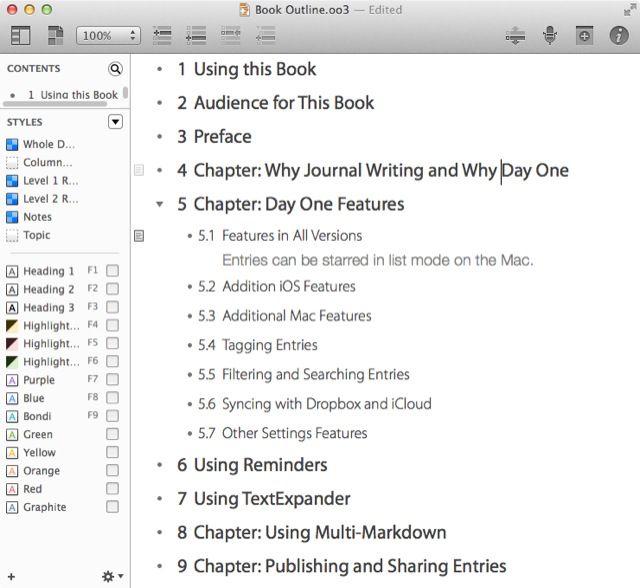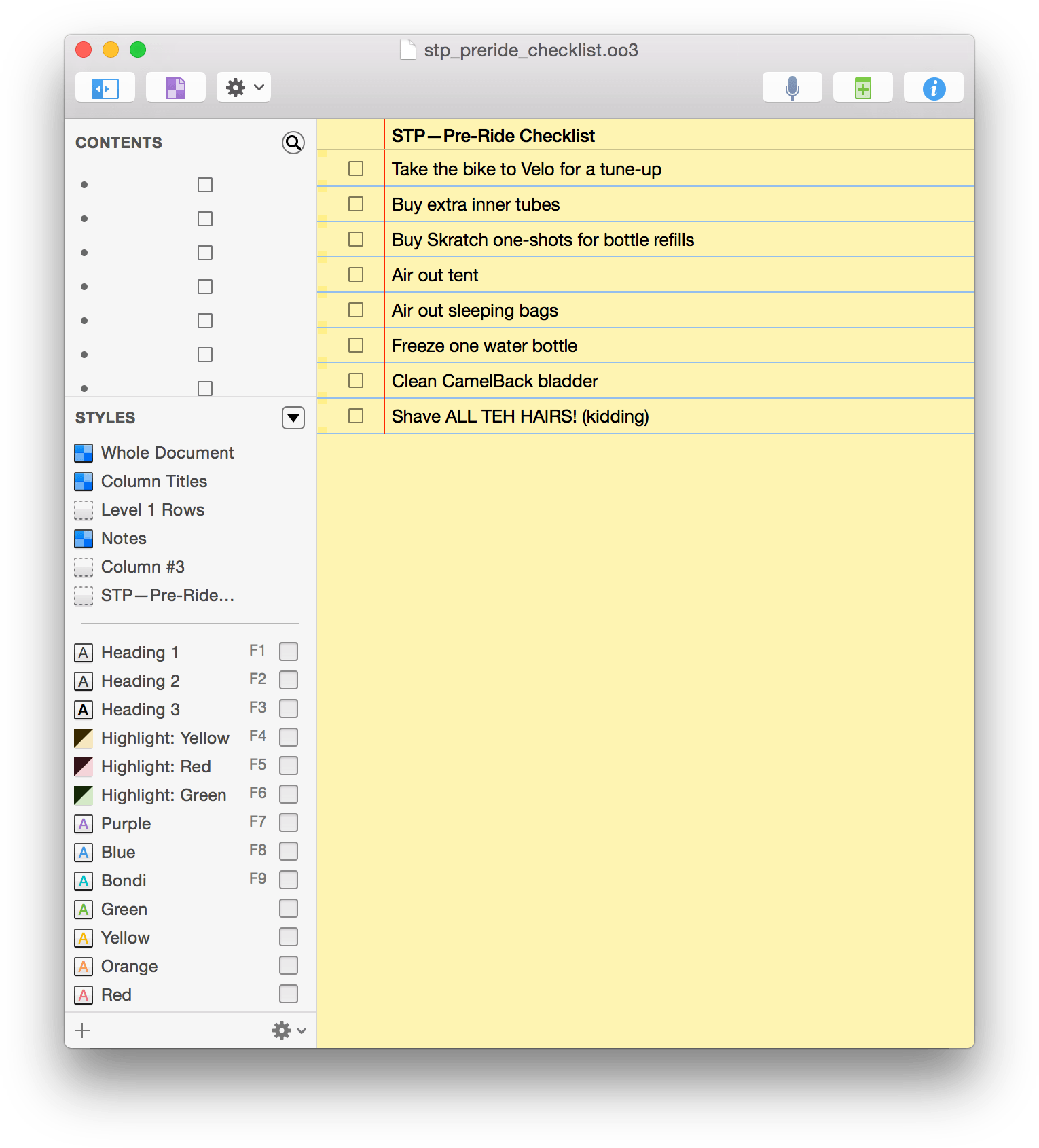

OmniOutliner 4, released in January 2014, caps a long span of time between major versions: OmniOutliner 3 first shipped in 2005 (before Apple switched Macs to Intel processors), and received several compatibility updates over the next 7 years. So, nearly every project begins life as an outline. But the articles and books I write require structure, planning, and flexibility. I don’t use it as a rolling to-do list, for example, or as a way to track inventory or financial information (all of which are possible). I don’t consider myself an obsessive outliner. OmniOutliner, from The Omni Group, is one of the few applications I set to launch automatically when my Mac starts up. As you’re building an outline initially, the application gets out of the way, and when you need to rearrange things later, it doesn’t trip you up with hard-to-find commands or an overburdened interface. So what’s the point of an outlining application? If it’s good, it makes the act of outlining less intrusive so you can focus on organizing the information.

Sometimes, when I’m in a hurry, I’ll whip up an outline in BBEdit, Evernote, or the Drafts app on my iPad using simple tabs or dashes to denote levels of the hierarchy. An outline can be made using just about anything from a full-featured word processor to a basic text editor - it’s all just text. To someone who doesn’t work with words, an article about outlining software must sound pretty dry.
#1645: AirPlay iPhone to Mac for remote video, Siri learns to restart iPhones, Apple's Q1 2023 financials.1646: Security-focused OS updates, Photos Workbench review, Mastodon client wishlist, Apple-related conferences.1647: Focus-caused notification issues, site-specific browser examples, virtualizing Windows on M-series Macs.#1648: iPhone passcode thefts, Center Cam improves webcam eye contact, APFS Uncertainty Principle.#1649: More LastPass breach details and 1Password switch, macOS screen saver problem, tvOS 16.3.3 fixes Siri Remote bug.


 0 kommentar(er)
0 kommentar(er)
